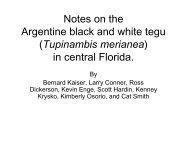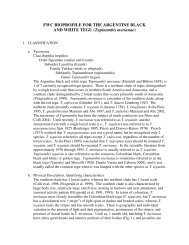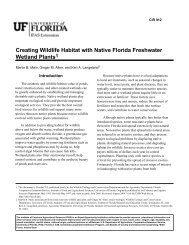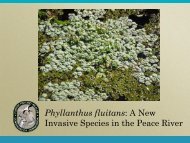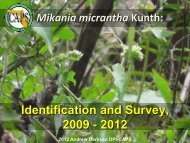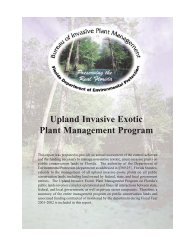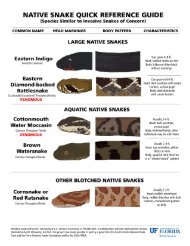Identification Guide For Invasive Exotic Plants of the Florida Keys
Identification Guide For Invasive Exotic Plants of the Florida Keys
Identification Guide For Invasive Exotic Plants of the Florida Keys
You also want an ePaper? Increase the reach of your titles
YUMPU automatically turns print PDFs into web optimized ePapers that Google loves.
Scientific Name:<br />
Common Name(s):<br />
Hylocereus undatus<br />
Night-blooming cereus<br />
Height:<br />
Leaves:<br />
Flowers:<br />
Bark:<br />
Fruit:<br />
O<strong>the</strong>r:<br />
Treatment:<br />
May reach 20 feet in length.<br />
Heavy, three-sided, green, fleshy, much-branched stems have flat, wavy<br />
wings with horny margins.<br />
The magnificent, night-blooming, very fragrant, bell-shaped, white flowers,<br />
up to 14 inches long and nine inches wide.<br />
N/A<br />
The non-spiny fruit is oblong-oval, to 4 in (10 cm) long, 2 1/2 in (6.25 cm)<br />
thick, coated with <strong>the</strong> bright-red, fleshy or yellow, ovate bases <strong>of</strong> scales.<br />
Within is white, juicy, sweet pulp containing innumerable tiny black, partly<br />
hollow seeds.<br />
Can be epiphytic ( recently changed from Cereus undatus)<br />
Manual removal<br />
Cal Lemke, University <strong>of</strong> Oklahoma<br />
http://community.webshots.com/photo/62443479/62443708bFoRkt<br />
19




